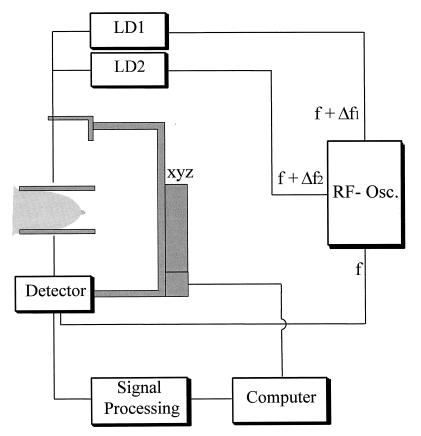Figure 1.
Schematic diagram of the frequency-domain LIMA. A radiofrequency oscillator (RF-Osc.) provides sinusoidally modulated current signals at two frequencies, namely f + Δf1 and f + Δf2 (f = 110 MHz, Δf1 = 1 kHz, and Δf2 = 0.8 kHz). These two signals supply two laser diodes (LD1 emitting at 690 nm and LD2 emitting at 810 nm) whose output beams (≈10 mW in power) are delivered to the breast. The radiofrequency oscillator also provides a signal at frequency f that modulates the gain of the detector. The frequency-domain raw data, ac amplitude and phase, are determined after signal processing of the detector output and are made available to the edge correction computer algorithm. The computer also controls the mechanical tandem scan of the laser beams and of the detector fiber, along the glass plates used for slight breast compression.

